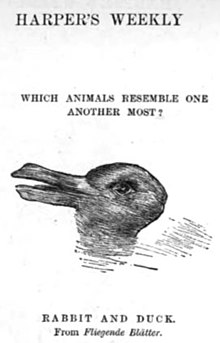
The brain is an organ that serves as the center of the nervous system in all vertebrate and most invertebrate animals. The brain is the largest cluster of neurons in the body and is typically located in the head, usually near organs for special senses such as vision, hearing and olfaction. It is the most specialized and energy-consuming organ in the body, responsible for complex sensory perception, motor control, endocrine regulation and the development of intelligence.
Evolutionary psychology is a theoretical approach in psychology that examines cognition and behavior from a modern evolutionary perspective. It seeks to identify human psychological adaptations with regards to the ancestral problems they evolved to solve. In this framework, psychological traits and mechanisms are either functional products of natural and sexual selection or non-adaptive by-products of other adaptive traits.

Neural Darwinism is a biological, and more specifically Darwinian and selectionist, approach to understanding global brain function, originally proposed by American biologist, researcher and Nobel-Prize recipient Gerald Maurice Edelman. Edelman's 1987 book Neural Darwinism introduced the public to the theory of neuronal group selection (TNGS) – which is the core theory underlying Edelman's explanation of global brain function.
Modularity of mind is the notion that a mind may, at least in part, be composed of innate neural structures or mental modules which have distinct, established, and evolutionarily developed functions. However, different definitions of "module" have been proposed by different authors. According to Jerry Fodor, the author of Modularity of Mind, a system can be considered 'modular' if its functions are made of multiple dimensions or units to some degree. One example of modularity in the mind is binding. When one perceives an object, they take in not only the features of an object, but the integrated features that can operate in sync or independently that create a whole. Instead of just seeing red, round, plastic, and moving, the subject may experience a rolling red ball. Binding may suggest that the mind is modular because it takes multiple cognitive processes to perceive one thing.

Terrence William Deacon is an American neuroanthropologist. He taught at Harvard for eight years, relocated to Boston University in 1992, and is currently Professor of Anthropology and member of the Cognitive Science Faculty at the University of California, Berkeley.

Biomusicology is the study of music from a biological point of view. The term was coined by Nils L. Wallin in 1991 to encompass several branches of music psychology and musicology, including evolutionary musicology, neuromusicology, and comparative musicology.

The triune brain is a model of the evolution of the vertebrate forebrain and behavior, proposed by the American physician and neuroscientist Paul D. MacLean in the 1960s. The triune brain consists of the reptilian complex, the paleomammalian complex, and the neomammalian complex (neocortex), viewed each as independently conscious, and as structures sequentially added to the forebrain in the course of evolution. According to the model, the basal ganglia are in charge of our primal instincts, the limbic system is in charge of our emotions and the neocortex is responsible for objective or rational thoughts.
Encephalization quotient (EQ), encephalization level (EL), or just encephalization is a relative brain size measure that is defined as the ratio between observed and predicted brain mass for an animal of a given size, based on nonlinear regression on a range of reference species. It has been used as a proxy for intelligence and thus as a possible way of comparing the intelligence levels of different species. For this purpose, it is a more refined measurement than the raw brain-to-body mass ratio, as it takes into account allometric effects. Expressed as a formula, the relationship has been developed for mammals and may not yield relevant results when applied outside this group.

The Expression of the Emotions in Man and Animals is Charles Darwin's third major work of evolutionary theory, following On the Origin of Species (1859) and The Descent of Man (1871). Initially intended as a chapter in The Descent of Man, The Expression grew in length and was published separately in 1872. This book concerns the biological aspects of emotional behavior, and Darwin explores the animal origins of such human characteristics as the lifting of the eyebrows in moments of surprise and the baring of the teeth in an aggressive sneer. A German translation of The Expression appeared in 1872; Dutch and French versions followed in 1873 and 1874. Since its first publication, The Expression has never been out of print, but it has also been described as Darwin's "forgotten masterpiece"; psychologist Paul Ekman has argued that The Expression is the foundational text for modern psychology.
An artificial brain is software and hardware with cognitive abilities similar to those of the animal or human brain.
Michael S. Gazzaniga is a professor of psychology at the University of California, Santa Barbara in the USA, where he heads the new SAGE Center for the Study of the Mind. He is one of the leading researchers in cognitive neuroscience, the study of the neural basis of mind. He is a member of the American Academy of Arts & Sciences, the Institute of Medicine, and the National Academy of Sciences.
The evolution of human intelligence is closely tied to the evolution of the human brain and to the origin of language. The timeline of human evolution spans approximately seven million years, from the separation of the genus Pan until the emergence of behavioral modernity by 50,000 years ago. The first three million years of this timeline concern Sahelanthropus, the following two million concern Australopithecus and the final two million span the history of the genus Homo in the Paleolithic era.
Neuroconstructivism is a theory that states that phylogenetic developmental processes such as gene–gene interaction, gene–environment interaction and, crucially, ontogeny all play a vital role in how the brain progressively sculpts itself and how it gradually becomes specialized over developmental time.

Lisa Feldman Barrett is a University Distinguished Professor of psychology at Northeastern University, where she focuses on affective science. She is a director of the Interdisciplinary Affective Science Laboratory. Along with James Russell, she is the founding editor-in-chief of the journal Emotion Review. Along with James Gross, she founded the Society for Affective Science.
Darwinian literary studies is a branch of literary criticism that studies literature in the context of evolution by means of natural selection, including gene-culture coevolution. It represents an emerging trend of neo-Darwinian thought in intellectual disciplines beyond those traditionally considered as evolutionary biology: evolutionary psychology, evolutionary anthropology, behavioral ecology, evolutionary developmental psychology, cognitive psychology, affective neuroscience, behavioural genetics, evolutionary epistemology, and other such disciplines.
The theory of constructed emotion is a theory in affective science proposed by Lisa Feldman Barrett to explain the experience and perception of emotion. The theory posits that instances of emotion are constructed predictively by the brain in the moment as needed. It draws from social construction, psychological construction, and neuroconstruction.
Comparative cognition is the comparative study of the mechanisms and origins of cognition in various species, and is sometimes seen as more general than, or similar to, comparative psychology. From a biological point of view, work is being done on the brains of fruit flies that should yield techniques precise enough to allow an understanding of the workings of the human brain on a scale appreciative of individual groups of neurons rather than the more regional scale previously used. Similarly, gene activity in the human brain is better understood through examination of the brains of mice by the Seattle-based Allen Institute for Brain Science, yielding the freely available Allen Brain Atlas. This type of study is related to comparative cognition, but better classified as one of comparative genomics. Increasing emphasis in psychology and ethology on the biological aspects of perception and behavior is bridging the gap between genomics and behavioral analysis.

Animal consciousness, or animal awareness, is the quality or state of self-awareness within an animal, or of being aware of an external object or something within itself. In humans, consciousness has been defined as: sentience, awareness, subjectivity, qualia, the ability to experience or to feel, wakefulness, having a sense of selfhood, and the executive control system of the mind. Despite the difficulty in definition, many philosophers believe there is a broadly shared underlying intuition about what consciousness is.
In neuroscience, predictive coding is a theory of brain function which postulates that the brain is constantly generating and updating a "mental model" of the environment. According to the theory, such a mental model is used to predict input signals from the senses that are then compared with the actual input signals from those senses. With the rising popularity of representation learning, the theory is being actively pursued and applied in machine learning and related fields.
Faculty psychology is the idea that the mind is separated into faculties or sections, and that each of these faculties is assigned to certain mental tasks. Some examples of the mental tasks assigned to these faculties include judgment, compassion, memory, attention, perception, and consciousness. For example, we can speak because we have the faculty of speech or we can think because we have the faculty of thought. Thomas Reid mentions over 43 faculties of the mind that work together as a whole. Additionally, faculty psychology claims that we are born with separate, innate human functions.










